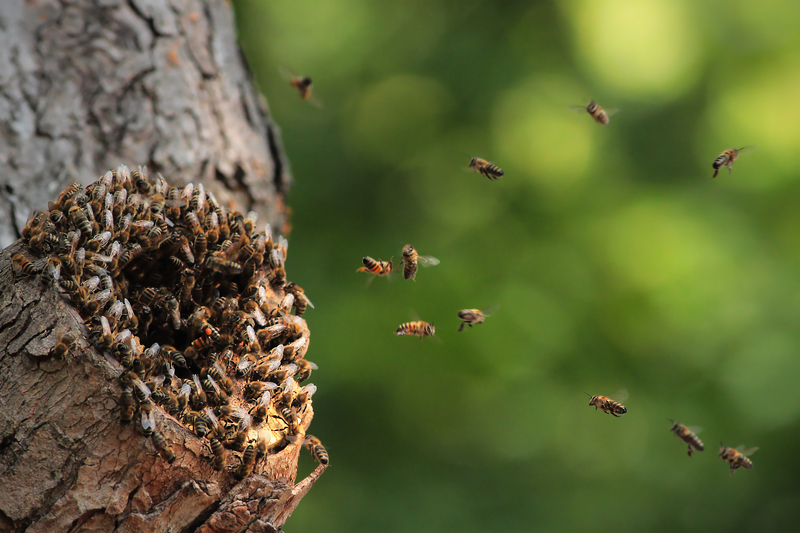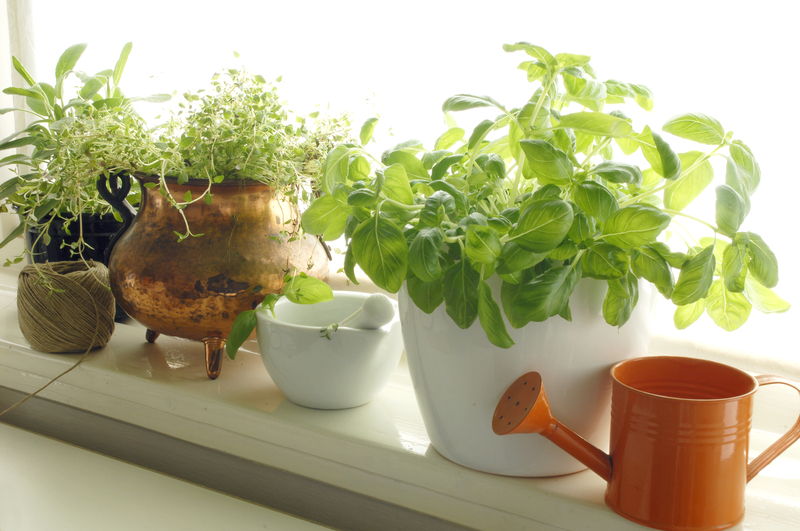Bringing Climate Change Solutions To The Earth With Gardens
Posted on 15/08/2025
Bringing Climate Change Solutions to the Earth with Gardens
Climate change stands as one of the most urgent challenges facing humanity. Its effects can be seen across the globe: rising temperatures, erratic weather patterns, diminishing biodiversity, and more. Yet, one solution--gardening--has been right under our noses. Gardens have the power to help mitigate climate change, sequester carbon, promote biodiversity, and foster sustainable communities.
In this comprehensive article, we'll explore how bringing climate change solutions to the earth with gardens can empower individuals and communities. From urban spaces to rural farmlands, every bit of green counts. Discover the practical steps, theory, and benefits of using gardens as nature-based solutions for today's climate crisis.

Understanding the Relationship Between Gardens and Climate Change
Why Focus on Gardens?
Gardens do much more than beautify our homes and streets. They form micro-ecosystems, offering a haven for pollinators, improving air quality, and capturing atmospheric carbon dioxide. In essence, gardens act as natural allies in the fight against climate change. But how do gardens help mitigate climate change in practical terms? Let's break it down.
- Carbon Sequestration: Plants absorb carbon dioxide during photosynthesis, which helps offset greenhouse gas emissions.
- Cooling Urban Spaces: Trees and shrubs provide shade and release water vapor, effectively reducing the urban heat island effect.
- Boosting Biodiversity: Diverse gardens attract a variety of species, promoting resilient local ecosystems.
- Soil Health: Healthy soil stores more carbon while also filtering pollutants from water sources.
- Promoting Sustainable Food Systems: Edible gardens cut back on food miles and related emissions.
The Role of Urban Gardens in Climate Resilience
Urban gardens and community green spaces are indispensable, especially as more of the world's population moves to cities. Green roofs, vertical gardens, and rooftop farms are appearing on city skylines, demonstrating that you don't need sprawling land to make a difference. These green innovations help to:
- Insulate buildings, reducing energy consumption
- Manage stormwater runoff during heavy rains
- Improve air quality by trapping particulates
- Offer habitats for birds and insects in dense urban areas
Climate Change Solutions: How Gardens Make a Real Impact
1. Carbon Capture Through Healthy Soils
One of the most powerful ways gardens tackle climate change is through carbon sequestration. Plants capture CO2 during photosynthesis and store it in their tissues. However, the real magic happens in the soil. When organic matter (like leaves and roots) decomposes, some carbon remains trapped in the ground for decades. That's why:
- No-dig gardening methods preserve soil structure and maximize underground carbon storage.
- Composting returns valuable carbon to the earth rather than letting it escape into the atmosphere.
- Mulching keeps soils moist, fertile, and teeming with microbial life that promotes carbon retention.
2. Increasing Biodiversity - A Buffer Against Climate Extremes
Healthy gardens teem with life--from earthworms and bees to native birds and microorganisms. Biodiversity is crucial for climate adaptation because a variety of species means greater resilience to pests, diseases, and extreme weather. Monoculture lawns or single-crop gardens are more vulnerable. To boost biodiversity:
- Plant a wide range of native species
- Integrate flowering plants for pollinators
- Install water features to support amphibians and birds
- Let parts of your garden go wild to become mini-refuges for wildlife
3. Reducing Food Miles with Edible Gardens
Did you know that the average meal travels over 1,500 miles from farm to fork? Growing food at home, in schools, or in community gardens drastically reduces these food miles, cutting greenhouse gas emissions from transportation and packaging. Edible gardens empower people to eat seasonally and locally, further shrinking their carbon footprint.
- Herb spirals and raised beds make food growing possible even in tiny yards
- Select varieties suited to your climate for abundant, low-fuss harvests
- Exchange seeds and produce with neighbors to multiply diversity and resilience
4. Conserving Water and Reducing Flood Risk
Gardens can help address both drought and flooding--common extremes intensified by climate change. Rain gardens, swales, and permeable pavements soak up excess rainfall, reducing the risk of urban flooding and recharging groundwater. Meanwhile, drought-tolerant planting ensures year-round greenery without wasting water.
- Install a rain barrel to collect roof runoff
- Use mulch and groundcovers to minimize evaporation
- Choose native or climate-adapted plants that thrive with minimal irrigation
Designing Gardens to Maximize Climate Benefits
Permaculture Principles: Working With Nature, Not Against It
Permaculture is a design philosophy that mimics natural ecosystems. Gardens designed with these principles require less energy, produce less waste, and continuously regenerate themselves--a boon for the environment. Some permaculture practices include:
- Plant guilds: Combining trees, shrubs, and groundcovers for mutual benefit
- Polycultures: Growing multiple species together to confuse pests and balance nutrients
- Water conservation: Designing contours in the land to slow and absorb rainfall
- Closed-loop systems: Composting all garden waste to feed the soil
By embracing permaculture, gardeners can supercharge their efforts to combat global warming.
Choosing the Right Plants for Changing Climates
As the climate shifts, so must our plant choices. Xeriscaping--gardening with drought-tolerant plants--reduces the need for irrigation while supporting resilient landscapes. More tips for climate-smart planting:
- Favor perennial plants over annuals--they store more carbon and require less maintenance
- Use local native species, which are adapted to your region's temperature and rainfall patterns
- Consider trees that provide shade, reduce wind, and store significant amounts of carbon
- Rotate crops and avoid bare soil to maintain fertility and enhance biodiversity
Inspiring Examples: How Gardens Are Fighting Climate Change Worldwide
1. Urban Rooftop Gardens in Singapore
Singapore's "City in a Garden" initiative encourages residents and businesses to green as many rooftops and walls as possible. These urban gardens help regulate building temperatures, reduce stormwater runoff, and sequester carbon. As a result, Singapore is a global leader in sustainable urban living.
2. Community Food Forests in the United States
Cities such as Atlanta and Seattle are home to expansive community food forests. These lush green spaces offer free fruit, nuts, and vegetables while serving as valuable carbon sinks and wildlife corridors. They also provide education on sustainable agriculture and climate adaptation.
3. Regenerative Agriculture in Sub-Saharan Africa
In the face of desertification and erratic rains, farmers in Africa are turning to regenerative gardening practices--agroforestry, composting, and rainwater harvesting. These changes restore soil health, increase harvests, and protect communities from climate shocks.
How Individuals Can Contribute: Start Your Own Climate-Friendly Garden
Step-by-Step Guide to Creating a Sustainable Garden
- Assess your Space: Even a balcony or windowsill can host a thriving mini-garden.
- Choose Low-Impact Materials: Opt for recycled pots, peat-free soils, and locally sourced amendments.
- Plant for Pollinators and Diversity: Prioritize native flowers, herbs, and shrubs.
- Practice Water-Wise Gardening: Use mulch, group thirsty plants together, and install a rain barrel.
- Compost Your Waste: Reduce landfill emissions and feed your soil.
- Share Knowledge and Harvests: Join a community garden or local food swap.
Tips For a Thriving, Climate-Positive Garden
- Let nature take the lead: Encourage wild corners and native plants.
- Maintain healthy soil: Feed with compost, not chemicals.
- Integrate trees: Even small trees or shrubs store carbon and provide habitat.
- Reduce or eliminate lawn areas: Replace thirsty grass with drought-tolerant groundcovers.
- Choose plants adapted to your local climate for resilience and beauty.

The Broader Impact of Garden-Based Climate Change Solutions
Gardens as Inspiration and Education Hubs
Gardens double as hands-on classrooms, teaching children and adults alike about ecology, sustainable living, and climate change. School gardens, in particular, instill environmental stewardship from a young age, making the fight against climate change a community effort.
Policy, Advocacy, and the Power of Community
On a larger scale, supporting urban agriculture policies, advocating for green spaces, and participating in citizen science can pressure lawmakers to act on climate change. Collective gardening efforts amplify individual impact, creating a groundswell of support for environmental protection.
Conclusion: Growing Hope - One Garden at a Time
Bringing climate change solutions to the Earth with gardens is a powerful, accessible, and sustainable way to combat global warming. Every garden, large or small, helps sequester carbon, foster biodiversity, and build resilient communities.
As we face uncertain climatic futures, let us remember: gardens are not only sanctuaries for the soul but also vital tools for healing the planet. By digging in--literally--we become partners with nature, nurturing both the earth and ourselves.
Ready to join the movement? Start with a seed, a pot, or a packet of wildflowers. Together, we can cultivate a greener, cooler future for generations to come.

